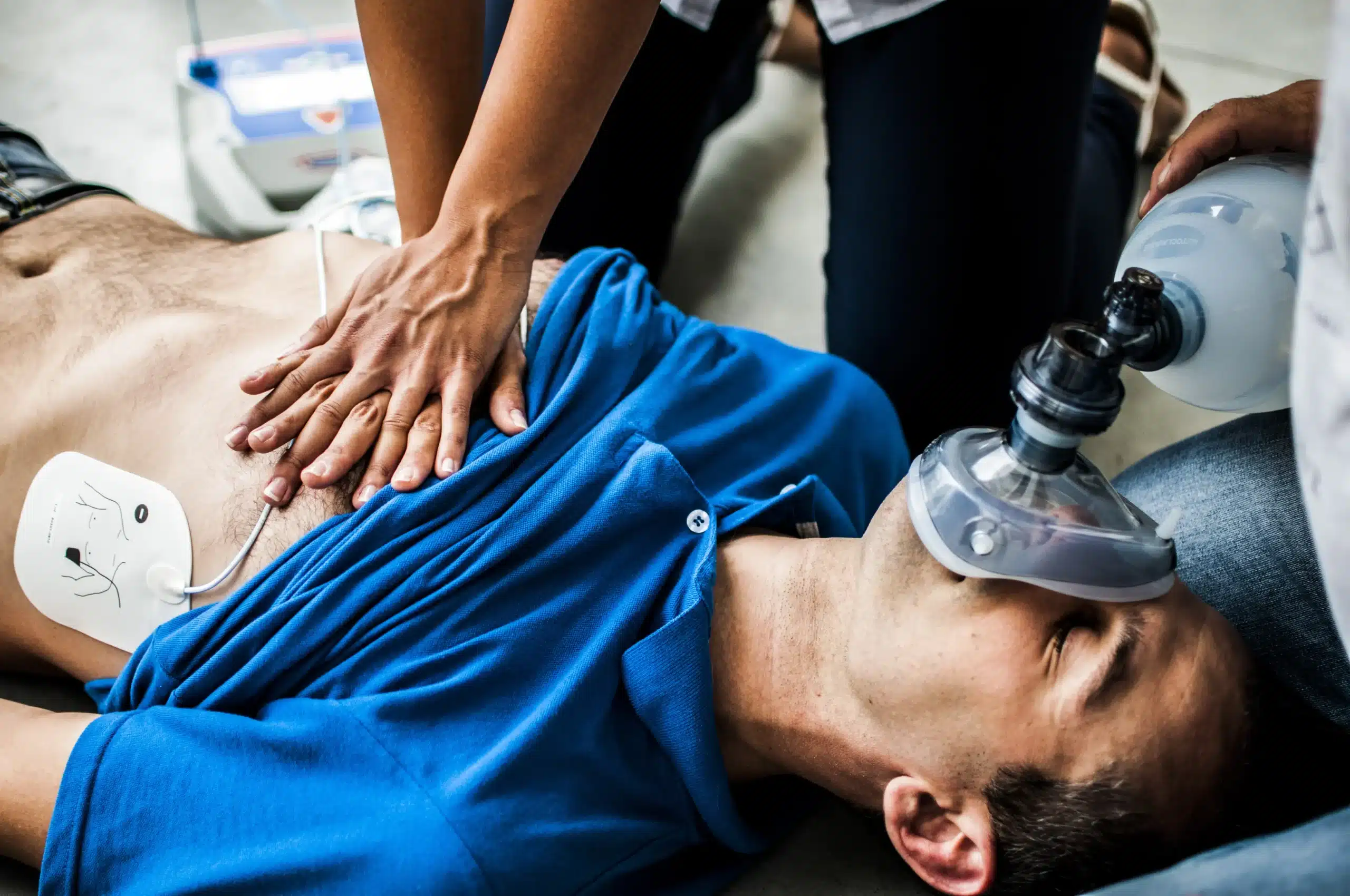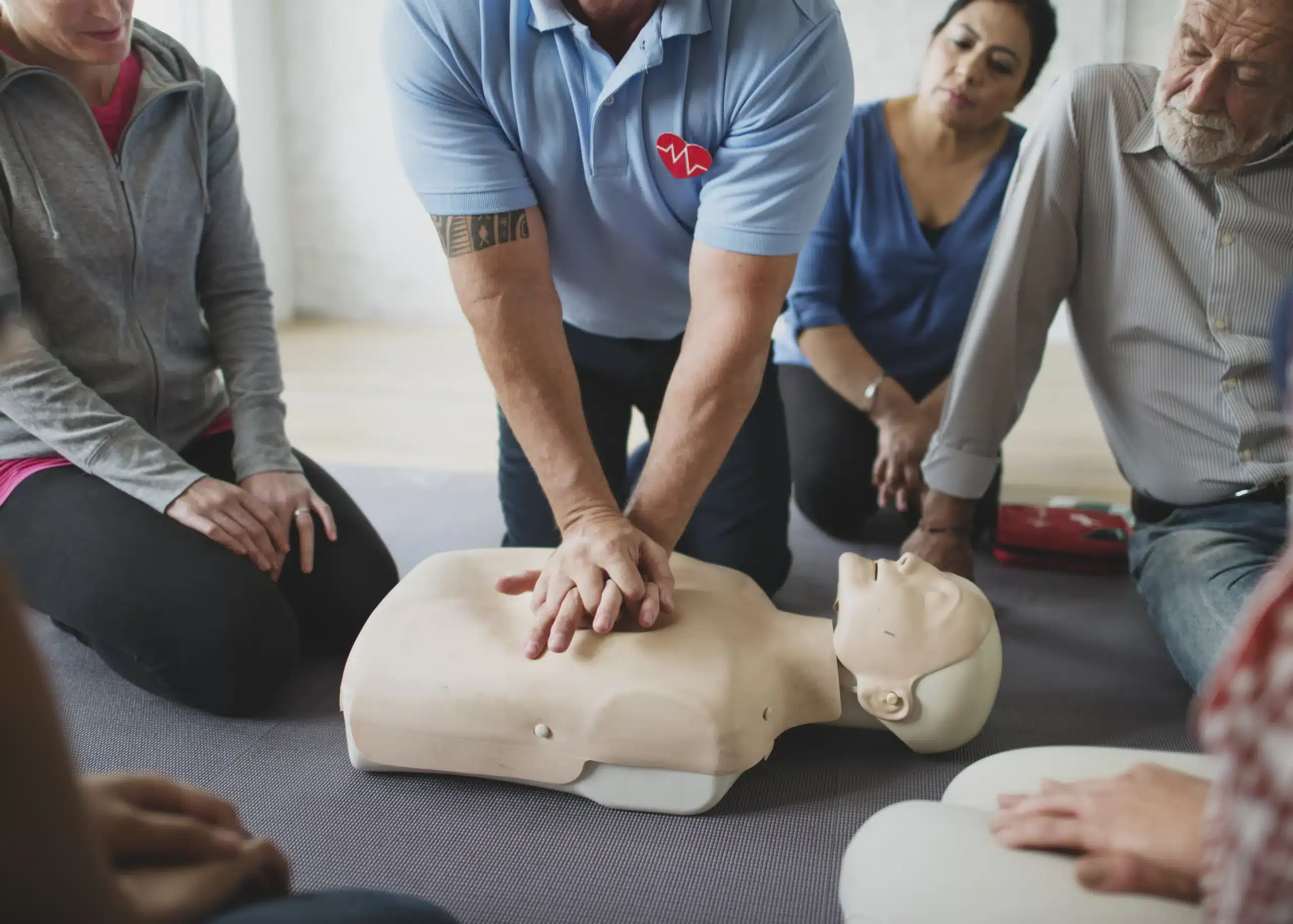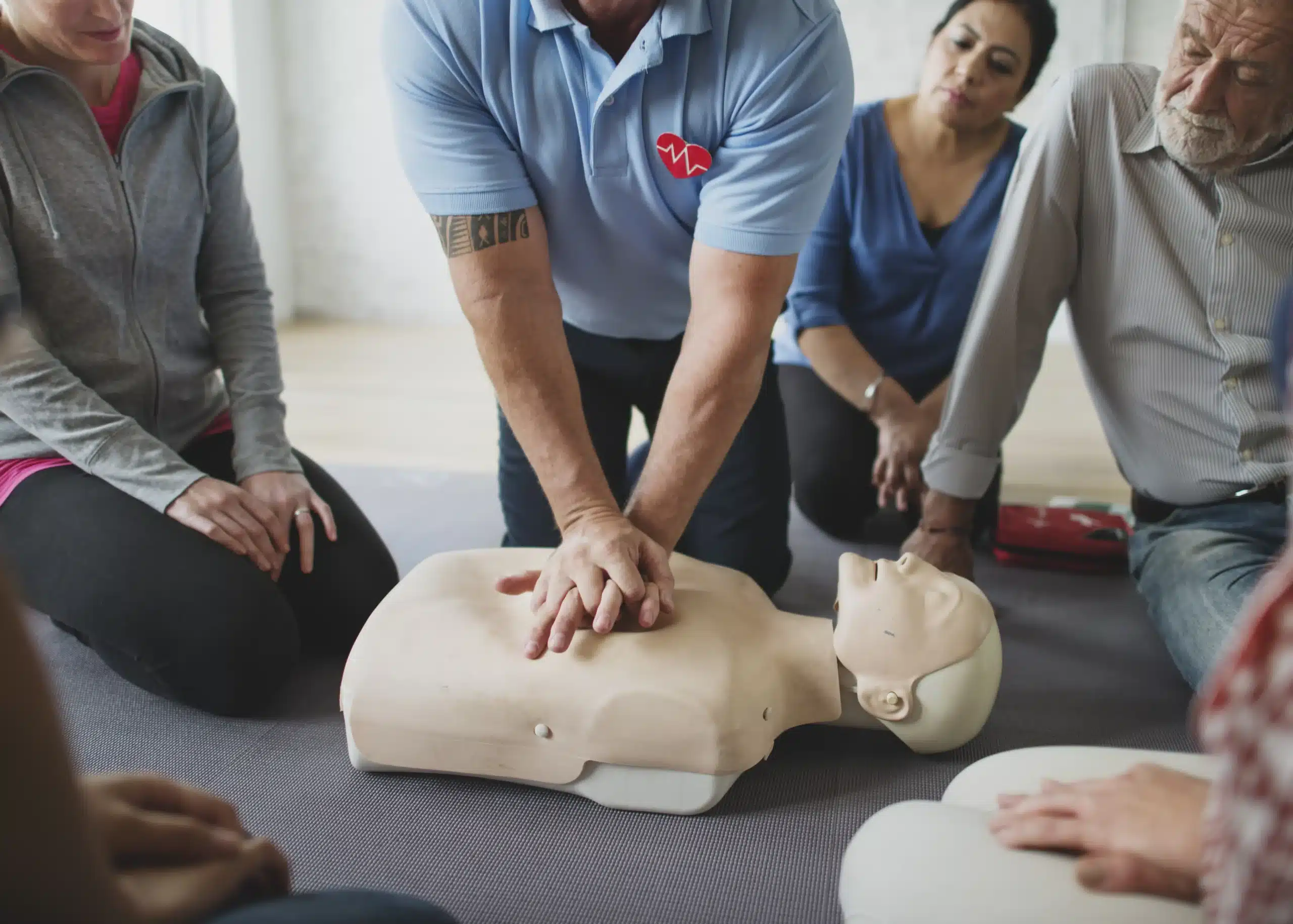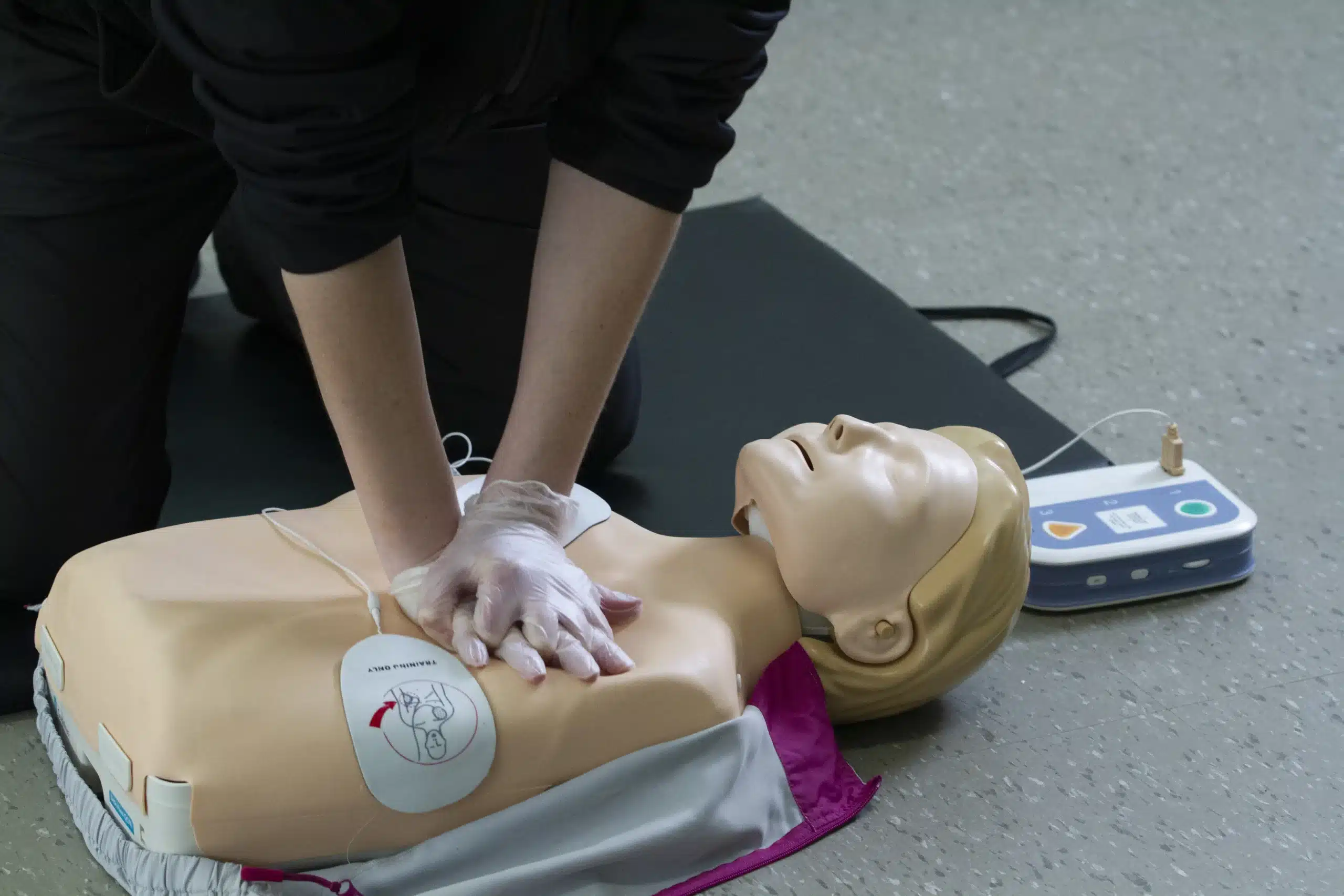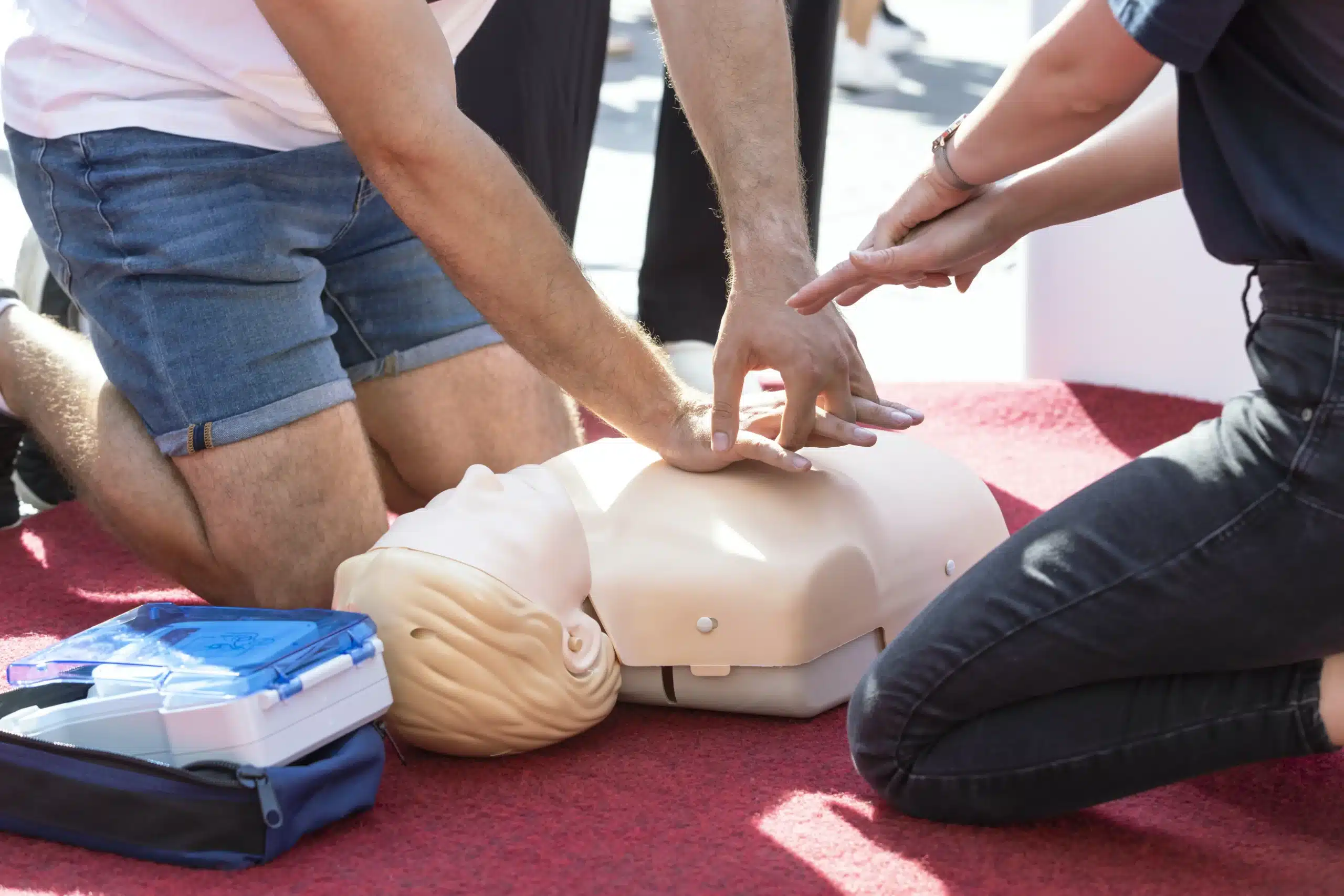Emergencies can happen anytime, anywhere. Being equipped with CPR and first-aid skills can empower you to respond effectively and potentially save a life. This guide focuses on CPR and first-aid training in Cupertino, providing valuable information for residents seeking to become certified. We’ll explore the different types of training available, from basic life support to specialized courses for healthcare providers and childcare professionals. Whether you’re looking for CPR and first-aid certification in Cupertino to meet job requirements, enhance your resume, or simply be prepared for any situation, this guide will help you find the right course and resources. We’ll also discuss the importance of maintaining your skills and staying current with the latest guidelines, ensuring you’re always ready to respond confidently in an emergency.
Key Takeaways
- CPR and first aid skills empower you in emergencies: Whether you’re a healthcare professional or a concerned citizen, these skills equip you to respond effectively to various situations, from minor injuries to life-threatening events. Find the right course for your specific needs and learn how to make a difference.
- Select the best training program for your goals: Consider factors like the type of certification required for your profession or personal interests, the reputation of the training center, and the experience of the instructors. Look for convenient scheduling options and competitive pricing.
- Stay prepared by keeping your skills current: Regularly refresh your training to maintain your certification and stay up-to-date with the latest guidelines and techniques. This ensures you’re always ready to provide effective assistance when it matters most.
What is CPR and First Aid?
First aid is a broad term for the initial support you provide to someone injured or ill before professional medical help arrives. It encompasses various techniques, from stabilizing someone’s condition and controlling bleeding to managing pain. CPR, or Cardiopulmonary Resuscitation, is a specific type of first aid used when someone’s heart has stopped and they’ve stopped breathing. The goal of CPR is to maintain blood flow to the brain and vital organs until emergency medical services take over. Understanding the difference between general first aid and CPR is important, as CPR is a specialized skill within the broader context of first aid. Both are essential for responding to emergencies and can be life-saving.
Find CPR and First Aid Training in Cupertino
Cupertino residents have several options for CPR and first aid training, from basic to advanced certifications. Whether you’re a healthcare provider, childcare professional, or simply want to be prepared for emergencies, finding the right course is easy. Let’s explore the different types of training available near you.
Basic Life Support (BLS)
BLS certification is crucial for healthcare professionals and anyone responding to life-threatening emergencies. It covers core skills like CPR, recognizing and relieving choking, and using an AED. Campbell CPR Classes offers BLS certification designed to meet various needs, equipping you with the knowledge and skills to handle emergencies confidently. For those looking for group discounts, check out their options for discounted group CPR classes.
Advanced Cardiac Life Support (ACLS)
ACLS training builds upon BLS, focusing on advanced cardiovascular emergencies. This course is designed for healthcare providers, including doctors, nurses, and paramedics. Campbell CPR Classes provides ACLS certification, covering topics like airway management, rhythm recognition, and effective team dynamics. They also offer the RQI program for high-quality CPR skills.
Pediatric Advanced Life Support (PALS)
PALS certification focuses on the specialized needs of infants and children in emergency situations. Like ACLS, it’s geared towards healthcare professionals who regularly work with young patients. You can find comprehensive PALS training at Campbell CPR Classes. Consider checking their low price guarantee to ensure you’re getting the best value.
Heartsaver CPR AED
The Heartsaver CPR AED course is a great option for anyone wanting to learn CPR and how to use an AED. This course, offered by the Santa Clara County Fire Department, provides valuable skills for community members and those in non-healthcare roles. For more information about local courses and options, contact Campbell CPR Classes directly.
First Aid Basics
Learning basic first aid is essential for handling everyday injuries and medical emergencies. From minor cuts and burns to more serious situations, first aid knowledge can make a real difference. In-Home CPR offers first aid training covering a range of topics, empowering you to respond effectively in various scenarios.
EMSA Child Care Health & Safety
For childcare providers in California, EMSA Child Care Health and Safety training is often required. This specialized training covers health and safety best practices for working with children. Campbell CPR Classes offers this essential training, helping childcare professionals create a safe and healthy environment. They are a woman-owned business committed to excellent customer service.
Top CPR and First Aid Training Providers in Cupertino
Finding the right CPR and first aid training can feel overwhelming, so I’ve put together this list of trusted providers in and around Cupertino. Whether you’re a healthcare provider, work with kids, or simply want to be prepared, there’s an option here for you.
Campbell CPR Classes
Campbell CPR Classes offers a range of American Heart Association (AHA) certifications, including BLS, ACLS, PALS, and First Aid. They also cover specialized courses like RQI and EMSA Child Care Health & Safety training. Known for great customer service and competitive prices, they even have a low price guarantee. Conveniently located for those in Campbell, San Jose, and Cupertino, you can find more information on schedules and group discounts on their website or contact them directly.
Santa Clara County Fire Department
The Santa Clara County Fire Department (SCCFD) offers several CPR/AED training options. They have an AHA Heartsaver® CPR/AED Blended Learning Course, an AHA Heartsaver® CPR/AED 4-Hour In-Person Course, and a Hands-Only CPR/AED and Choking Relief Class. Learn more about their courses and find a schedule that works for you on the SCCFD website.
In-Home CPR
If you prefer a more personalized approach, In-Home CPR brings the training to your doorstep. They offer various first aid, CPR, and advanced life support (ALS) certification courses right in Cupertino. Their instructors will come to your home or business, which is a great option for busy schedules or group training. Explore their courses and request a session on the In-Home CPR website.
American Red Cross
The American Red Cross is a familiar name in CPR and First Aid training. They offer classes in nearby San Jose, with both in-person and blended online/in-person options available. These courses meet OSHA requirements and equip you with valuable, practical skills. Find a class near you and register on the Red Cross website.
What Happens in a CPR and First Aid Class?
CPR and first aid classes blend theory and hands-on practice to equip you with the skills to respond effectively in emergencies. Whether you choose blended learning, a traditional classroom setting, or in-home training, you’ll learn essential lifesaving techniques.
Course Formats and Duration
Several course formats cater to different learning styles and schedules. Blended learning often combines online modules with in-person skills sessions, offering flexibility. Traditional in-person classes provide a structured learning environment with direct instructor interaction. Providers like In-Home CPR even bring the training to your home or workplace. Class duration varies, with options like the AHA Heartsaver CPR/AED Blended Learning course offering a convenient, flexible way to learn.
Practice and Get Assessed
Hands-on practice forms the core of CPR and first aid training. You’ll learn how to perform high-quality chest compressions, deliver rescue breaths, and use an Automated External Defibrillator (AED). Instructors guide you through simulated scenarios, allowing you to apply your knowledge in a safe and controlled environment. These practice sessions build confidence and ensure you’re prepared to act quickly and efficiently during a real emergency.
Get Certified
Upon successful completion of your CPR and first aid training, you’ll receive a certification, typically valid for two years. This certification validates your skills and knowledge to potential employers, regulatory bodies, or volunteer organizations. Renewal courses are available as your certification nears its expiration date, ensuring your skills remain current.
Additional Materials and Resources
Many organizations offer supplementary resources to enhance your learning. The American Heart Association provides various materials, including training kits and guidelines. Providing first aid can be emotionally challenging. Resources are available to offer support and guidance for individuals who have provided assistance in emergencies.
CPR and First Aid Training Costs
CPR and first aid training are valuable investments. Knowing the associated costs helps you budget and find the best training for you. Let’s break down typical pricing and what your course fee covers.
Individual and Group Pricing
Training costs vary depending on the course type, location, and provider. Individual CPR/AED/First Aid certification ranges from $25 to $75, while BLS for Healthcare Providers typically costs between $50 and $100. Many providers, including Campbell CPR Classes, offer discounts for group bookings, making it a smart option for workplaces or community groups. For the best value in Santa Clara County, check out Campbell CPR Classes’ Low Price Guarantee.
What Your Course Fee Covers
Your course fee covers several key components. This includes instruction led by certified instructors, and any required course materials. The fee also covers skills testing and certification. You’ll receive a nationally recognized certification card, valid for two years, upon successful completion. Providers like CPR Test Center often emphasize their comprehensive training, from CPR to AED use.
Low Price Guarantee and Discounts
Affordable, high-quality training is readily available. Look for providers with a low price guarantee or special discounts. Campbell CPR Classes offers a Low Price Guarantee in Santa Clara County, ensuring competitive pricing for excellent training. They also have discounts for group classes, making them a great choice for organizations. Contact training centers directly to ask about promotions or special rates for students, seniors, or military personnel.
Meet Your Instructors
When choosing a CPR and First Aid class, the quality of instruction matters. You want instructors who can clearly explain concepts, demonstrate techniques, and provide helpful feedback. At Campbell CPR Classes, we pride ourselves on our team of experienced and certified professionals.
Experienced Healthcare Professionals
Our instructors are EMTs, RNs, and paramedics actively working in their fields. They bring real-world experience and engaging teaching styles to every class. This means you’re learning from professionals who have applied these life-saving skills in actual emergencies. They can offer practical insights and answer your questions based on firsthand knowledge, giving you a deeper understanding of the material.
Certified AHA Instructors
All our instructors are certified by the American Heart Association (AHA). The AHA sets rigorous standards for CPR and First Aid training, ensuring courses are developed and reviewed by experts. This commitment to quality and accuracy means you receive training based on the latest scientific guidelines and best practices. Choosing an AHA-certified course, like those offered at Campbell CPR Classes, ensures you receive a recognized and respected certification.
How Certification Benefits You
Getting certified in CPR and First Aid isn’t just about checking a box; it’s about gaining skills that can make a real difference. Whether you’re a parent, teacher, healthcare provider, or simply someone who wants to be prepared, certification offers numerous benefits.
Prepare for Emergencies
Life is unpredictable. Emergencies can happen anytime, and often without warning. Knowing CPR and First Aid gives you the confidence to respond effectively when every second counts. Instead of feeling helpless, you’ll have the skills to assess the situation, provide immediate care, and potentially save a life. As highlighted in the CPR Certification in Campbell guide, learning CPR equips you with the skills and confidence to respond effectively in critical situations.
Meet Job Requirements
For many professions, CPR and First Aid certifications are essential. These certifications are often required for jobs in healthcare, childcare, education, and fitness. Getting certified can open doors and make you a more competitive candidate if you’re pursuing a career in these fields. Even if not strictly required, having these skills shows your commitment to safety and preparedness, a valuable asset in any workplace. This article highlights how many jobs require this type of certification, including positions in childcare and schools. Check out our discount group classes if you’re looking for affordable training options.
Advance Your Career
Even if you’re already employed, CPR and First Aid certifications can improve your career prospects. They can qualify you for new roles, increase your earning potential, and demonstrate a commitment to professional development. These certifications can also enhance your leadership skills by showing you can handle critical situations and take charge when needed. The confidence you gain from knowing these life-saving skills can also benefit other areas of your professional life. Consider our BLS certification to further your career. We also offer RQI classes for healthcare professionals looking to maintain their resuscitation skills. Contact us to learn more about our Low Price Guarantee.
Choose the Right Course
Finding the right CPR and first aid training involves understanding your needs, exploring available options, and considering the learning format that suits you best. Let’s break down how to make the best choice for your situation.
Assess Your Needs
Why are you pursuing CPR certification? Is it a job requirement, or are you learning it for personal growth so you can help loved ones? Understanding your motivation will guide you toward the right course. Healthcare providers, like doctors and nurses, often need certifications like Basic Life Support (BLS) or Advanced Cardiac Life Support (ACLS). If you’re a parent, teacher, or childcare provider, a Heartsaver CPR AED course might be more appropriate. CPR certification empowers you to act in emergencies, equipping you with the skills and confidence to respond effectively. For those in Cupertino, Campbell CPR Classes offers a convenient and reputable option.
Compare Options and Reviews
Once you have a general idea of the type of course you need, compare specific programs. Look at different providers in your area, such as Campbell CPR Classes, the Santa Clara County Fire Department, or the American Red Cross. Reading reviews can offer valuable insights into other students’ experiences. Consider factors like class size, instructor experience, and overall course quality. Don’t limit your search solely to Cupertino; exploring options in nearby cities like Campbell might provide more choices. Contact us if you have questions.
Flexible Learning Formats
CPR and first aid courses come in various formats to accommodate different schedules and learning styles. Traditional in-person classes provide hands-on practice and direct interaction with instructors. If your schedule is tight, blended learning options combine online coursework with shorter in-person sessions for skills practice and assessment. This hybrid approach lets you learn at your own pace and then demonstrate your skills in a practical setting. Blended learning is a great way to fit essential training into a busy life. Check out our CPR class options to see what works best for you.
Maintain Your Skills
Earning your CPR and First Aid certification is a great first step, but staying current with the latest guidelines and techniques is essential for providing effective care in a real emergency. Regularly refreshing your skills ensures you’re always prepared and confident in your abilities.
Certification Validity
CPR and First Aid certifications are typically valid for two years. Keep track of your expiration date—jot it down in your calendar or set a reminder. Recertifying before your certification expires ensures your skills remain sharp and you’re up-to-date on current best practices. The American Red Cross website offers more information on CPR class requirements and specifics.
Refresher Courses
Even if your certification hasn’t expired yet, consider taking a refresher course. These courses reinforce core skills and introduce any updated procedures. Campbell CPR Classes offers refresher courses, including the American Heart Association’s RQI program, which helps healthcare providers maintain high-quality CPR skills. These targeted programs help you stay proficient and confident in your abilities. Learn more about our RQI classes.
Stay Updated
The medical field is constantly evolving, so staying informed about advancements in resuscitation science and emergency care is important. The American Heart Association provides valuable resources and information on updated guidelines and community training programs. Regularly reviewing these resources will help you provide the best possible care during an emergency.
Why CPR and First Aid Matter in Cupertino
Knowing CPR and first aid can make a real difference in your community. It empowers you to respond effectively during emergencies, potentially saving lives. Here in Cupertino, having these skills is especially valuable.
Local Emergency Preparedness
Cupertino offers residents many resources that support their well-being, from parks and health services to safety training programs. Learning CPR and first aid enhances your personal preparedness and contributes to a more resilient community. For more on local resources, read this guide to living in Cupertino.
Build a Safer Community
When more people are trained in CPR and first aid, our community becomes safer. Bystanders can provide immediate assistance during emergencies, bridging the gap until professional help arrives. Organizations like Campbell CPR Classes offer affordable training, making these essential skills accessible to everyone. Campbell CPR Classes offers a low price guarantee and you can learn more about discounted CPR classes in Santa Clara County.
Post-Training Support and Resources
Your learning journey doesn’t end after you receive your certification. Staying up-to-date is crucial for providing effective care. The American Heart Association offers resources and guidance, including FAQs and support for ECC courses. You can also find helpful information on basic life support from various first aid and safety training websites. Continuous learning ensures you’re always prepared to help when needed.
Related Articles
- CPR Certification in San Jose: Your Complete Guide – Campbell CPR Classes
- CPR Classes in Cupertino: Your Ultimate Guide – Campbell CPR Classes
- BLS Certification in Cupertino: Your Complete Guide – Campbell CPR Classes
- ACLS Courses in Campbell: Your Complete Guide – Campbell CPR Classes
- AHA PALS Classes in Campbell, CA – Campbell CPR Classes
Frequently Asked Questions
What’s the difference between CPR and First Aid?
First aid is the initial help given to someone who is injured or ill. CPR is a specific first aid technique used when someone’s heart has stopped beating and they’re not breathing. Think of CPR as one piece of the larger first aid puzzle.
How do I choose the right CPR or First Aid class?
Consider why you want the training. A healthcare professional needs a different level of certification than someone who wants to be prepared for family emergencies. Look at what various organizations offer and read reviews. Think about whether a traditional class, blended learning (online and in-person), or in-home training works best for you.
How much does CPR and First Aid training cost?
Costs vary based on the type of course, where you take it, and who’s teaching it. Individual CPR/First Aid/AED training usually runs somewhere between $25 and $75, while healthcare provider BLS courses are typically between $50 and $100. Many places offer group discounts, so check for those.
What should I expect during a CPR/First Aid class?
Expect a mix of learning the basics and practicing hands-on skills. You’ll learn how to do chest compressions, give rescue breaths, and use an AED. You’ll practice in a safe environment with instructors who can give you feedback. You’ll get a certification card once you complete the course.
How can I keep my CPR and First Aid skills current?
Certifications are usually good for two years. Make a note of when yours expires and plan to recertify. Even if your certification isn’t about to expire, a refresher course can help you stay sharp and learn any new guidelines. Keep up with the latest information from organizations like the American Heart Association.


